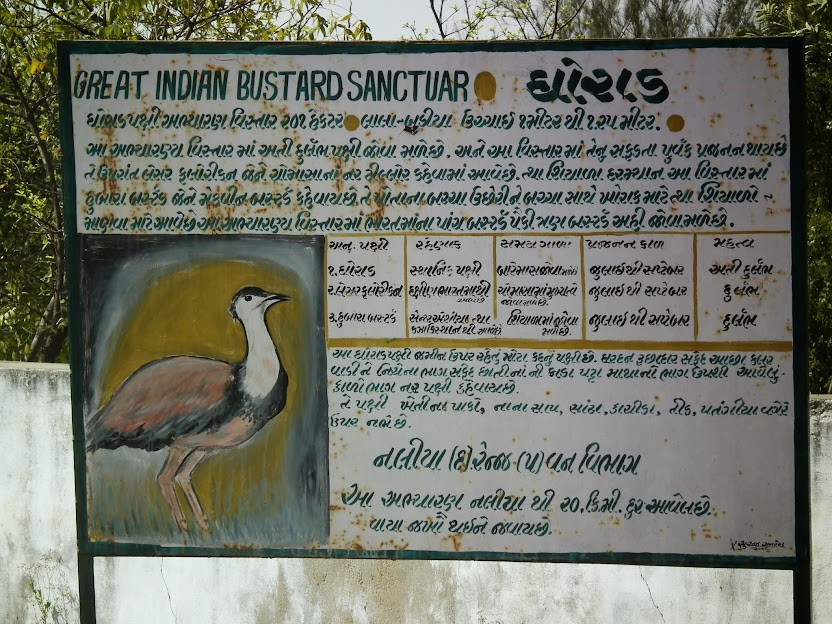
Located in the Kutch District of Gujarat, the Naliya Grassland is the smallest reserve of India, covering only 2 square kilometers (yes – 0.77 sq mi), which contradict the conservation significance of the bird it was founded for, some three decades ago – the Critically Endangered Great Indian Bustard. From one side, the reserve is under the attack of spreading arable fields, from another by numerous wind generators and it is no easy task to support the surviving breeding birds within its borders.
My guide, Chirag Solanki, told me he had once been searching here for five days, before he managed to locate the birds. He asks if the wind generators can influence the bird numbers? Indeed, I say.
I have already heard that most birds have left this tiny reserve, so I took a photo of an entrance sign with a painted bustard – the only one, I was convinced, I was going to see.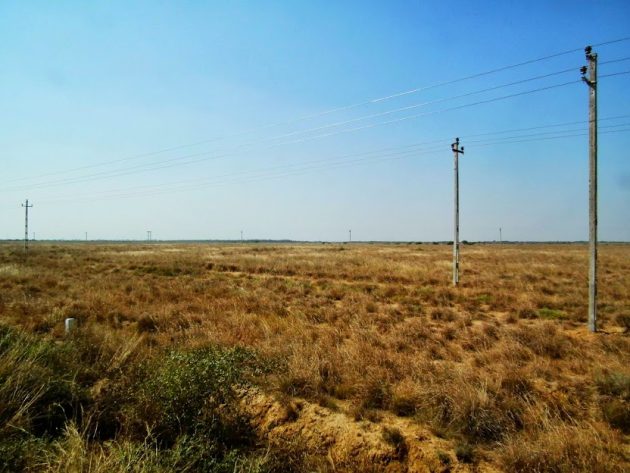 Naliya Grasslands
Naliya Grasslands
Off the tarmac we go, into dry turf intercepted by bare ground, where we follow wheel tracks. In the grass, Desert and Isabelline Wheatears await us, together with Tawny Pipits and large flocks of Greater Short-toed Larks; while Booted Eagle, Lesser Kestrel and even one Critically Endangered White-rumped Vulture fly above us.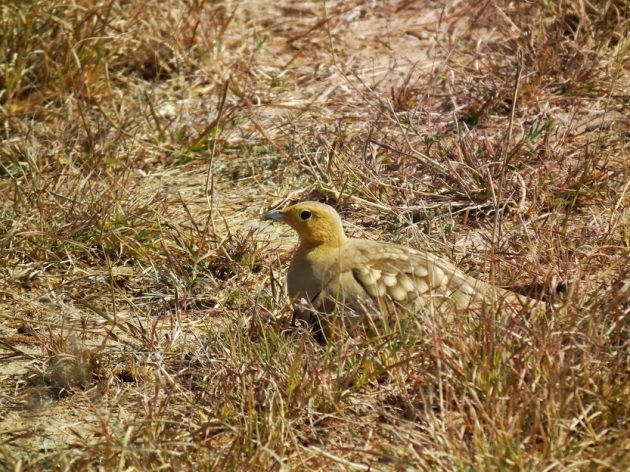 Chestnut-bellied Sandgrouse
Chestnut-bellied Sandgrouse
One Chinkara (Indian gazelle) male follows the female keeping his head low and sniffing her. A bit further away, there is another male, this one with a dozen female strong harem. Shimmering in the distance, Nilgais, the biggest antelopes of Asia, walk by.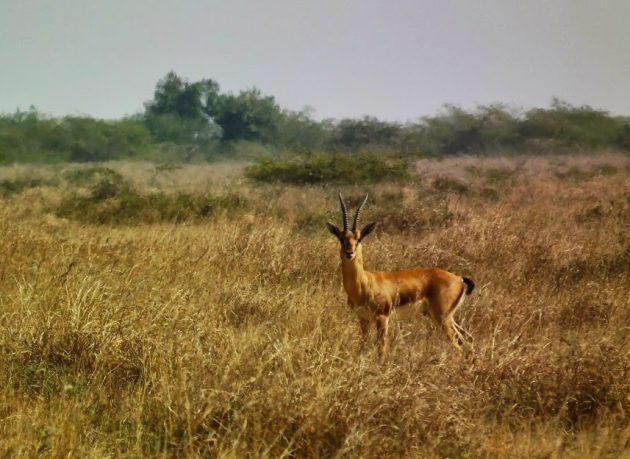 Indian gazelle
Indian gazelle
You know the secret of how African park rangers find animals for tourists? The main tactic is diversion. First, rangers would show some animal dung and teach their guests how to identify it (big deal – it is going nowhere, nor hiding away) and then show, let’s say, a herd of antelopes to their left – only to use the time when no one is watching to print some lion spurs in the dust on the right hand side, so they would be nicely fresh for photographing. And the animals themselves? When they spot a traffic jam in the savanna, it is easy enough to conclude that some unfortunate animal is being surrounded by telephoto lenses.
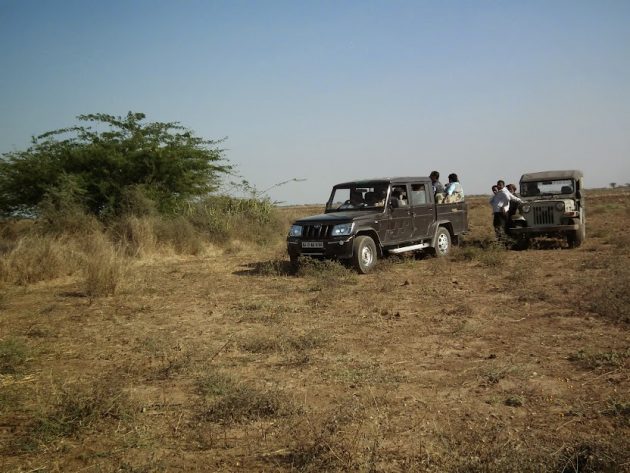
And so, we drive along the tarmac in between the two sections of the reserve… and by the roadside, there are two 4x4s loaded with telephoto lenses. Stop! Chiku goes for a chat with their guide, only to return saying: You seem to be a celebrity – he asked me is that Dragan Simic with you? It turned out that I had met the other guide a year ago at the Global Bird Watchers’ Conference in Gujarat. And why are they parked? Well, busy observing the Great Indian Bustard, of course.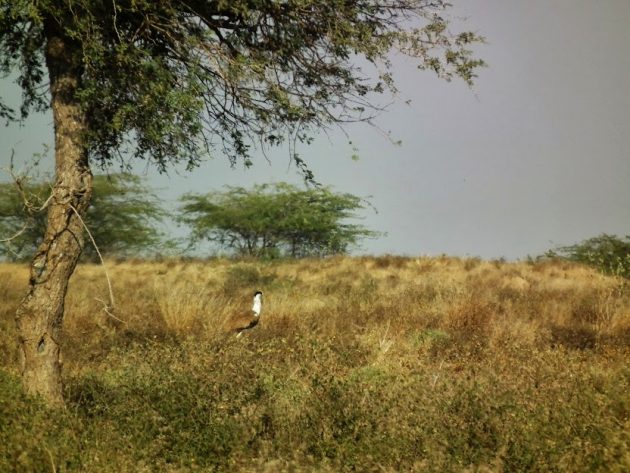 Great Indian Bustard
Great Indian Bustard
Indeed, some 150 meters away, four males are semi-displaying – more than 3 per cent of the surviving population!! We come a little closer, but not closer than 100 meters, admiring the sight in a religious silence, careful not to disturb them.
Hunting and disturbance, deterioration, fragmentation and destruction of habitat were the forces behind the decline of this, once widespread species, making it Critically Endangered on the IUCN Global Red List. The year was 2012, January 2012, and in the entire Kutch District, it was estimated that there were only about two dozen birds left. In the entire world, the Red List was saying, there were fewer than 250 mature individuals remaining. After my trip, I followed the news of this species closely. Data quoted above was likely already an overestimate at the time of observation – nowadays they are estimated to be fewer than 125 surviving mature individuals! 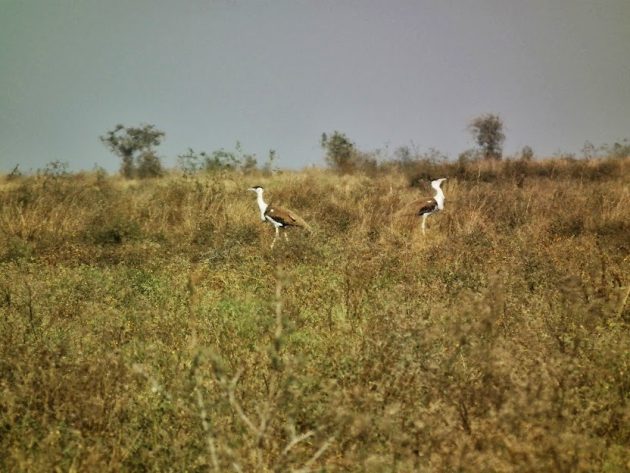 Great Indian Bustard
Great Indian Bustard
Back to that January, ten years ago, and our driver carefully sneaking out of the car to crush some betel nut and mix it with a chewing tobacco – only to slam the door afterwards!
The birds were a bit nervous by now, but still remained at the same place. After the African Kori Bustard and Eurasian Great Bustard (and I have observed both of them), this is the third largest bustard of the world. Males reach 1.2 meters (3.9 ft) in height and up to 18 kilograms (39 pounds). Once this species inhabited wide steppes of India and Pakistan, but nowadays remains in ever smaller and more isolated habitat fragments.
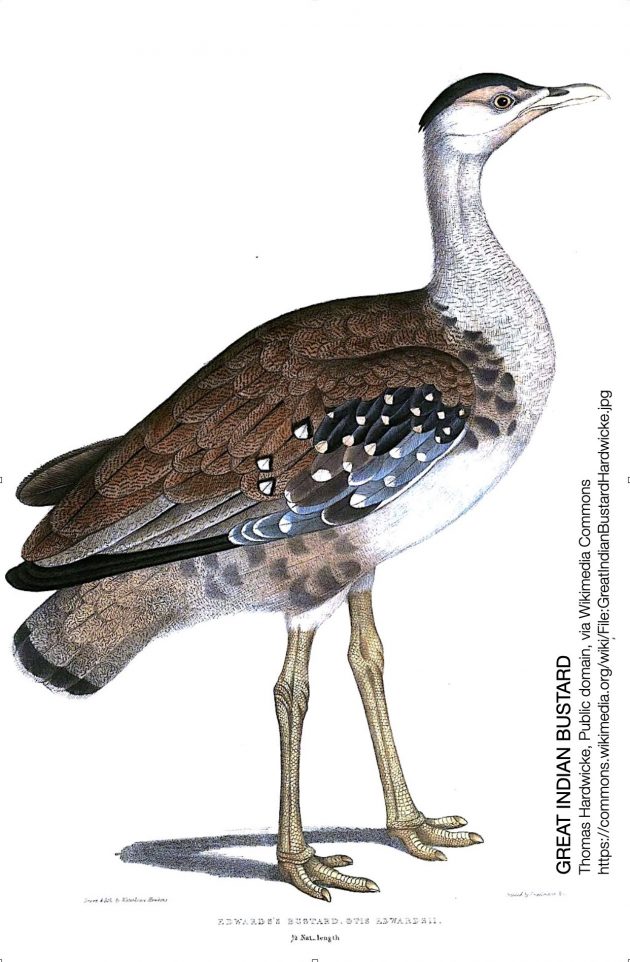
This species almost made the National Bird of India, but at the last moment someone remembered that misspelling can easily turn it from national pride into national shame… The Indian Peafowl made the National Bird and can be seen walking virtually everywhere, while bustards are walking along the very edge of extinction. The National Bird status would make funds and political will for conservation earlier within reach (it is within reach now, but…).
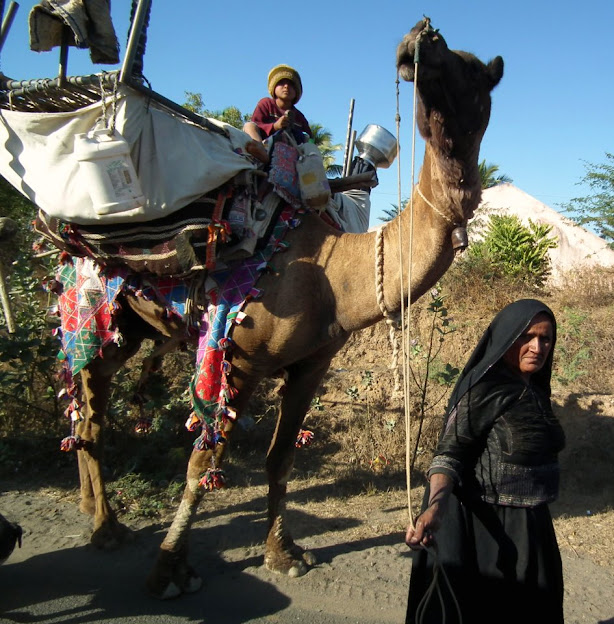
In the world where increasing human population demands ever more space and more arable land, the largest of birds are the first to lose the battle. The latest, 2021 assessment of the IUCN Red List of threatened species, considers 13% of bird species to be facing extinction.
Of those threatened species, 225 species are considered Critically Endangered and are therefore at extremely high risk of extinction in the wild (23 species more than in 2012 Red List, when this blog was originally written). Great Indian Bustard and White-rumped Vulture, as well as Forest Owlet, Sociable Lapwing, Lesser Florican and Indian Vulture, are six Critically Endangered species that I was privileged to observe in India, together with the White-backed Vulture (Africa), Great Green Macaw and the Yellow-naped Parrot (Central America).
Back to Naliya Grasslands, some time after my bittersweet sighting the local bustard population has fallen to 4 birds only, 3 females and one male. Then the male disappeared. Nowadays there are no bustards left in Nalya, nor in the whole of Gujarat, for that matter. Practically the entire surviving population, 120-130 birds, is in neighbouring Rajasthan, but 18 – or 15%, die annually colliding with powerlines! For how many years will they crawl along the edge of a straight razor, and survive? That is my dream; that is my nightmare.
Photos © Dusanka Stokovic Simic & Dragan Simic
Find the other stages of the same tour here:
Bhadreshwar – the Crab Plover dip
Nakhatrana – the Grey Hypocolius











Excellent.
Thank you, Sir.
What a fantastic experience that must have been! What a sad, frustrating, and nightmarish situation.
While I may say that I care for all threatened species, it becomes a different level when you were personally introduced to one… and the chance that it may slip away on your watch.
Ten years ago, I even suggested a project related to large birds and their mortality on powerlines and wind generators to a senior member of BirdLife India (Bombay Natural History Society), never to hear from him again.
Talking to beurecrats in india about anything which is not related to them or their family (only humans). Will not lead anywhere.. (there is a few exceptions but it’s generally the case). So the only way i see here would be for you to send the details to Maneka Gandhi… [ https://www.peopleforanimalsindia.org/contactus.php ] this is the contact page of her animal conservation group website. She is a politician and a member of parliament .. but she’s known (sometimes even notoriously for her love for animals, birds etc.. due to her public comments supporting the protection of animals.. which sometimes people can’t understand since people don’t value animals that much….).. anyway back to the point.. hopefully you can mention about your project idea etc. In e-mail or when you get a chance to meet her and hopefully you can be the one who lead to the rescue and protection of one of the countless living beings other than humans..(which are endangered or facing extinctional threat or will soon be endangered etc.. due to few or maybe majority of humans who have yet to learn the value of the nature and the humble living beings in the planet.)
Excellent passionate and vital conservation work, Dragan.
Thank you, Neil.